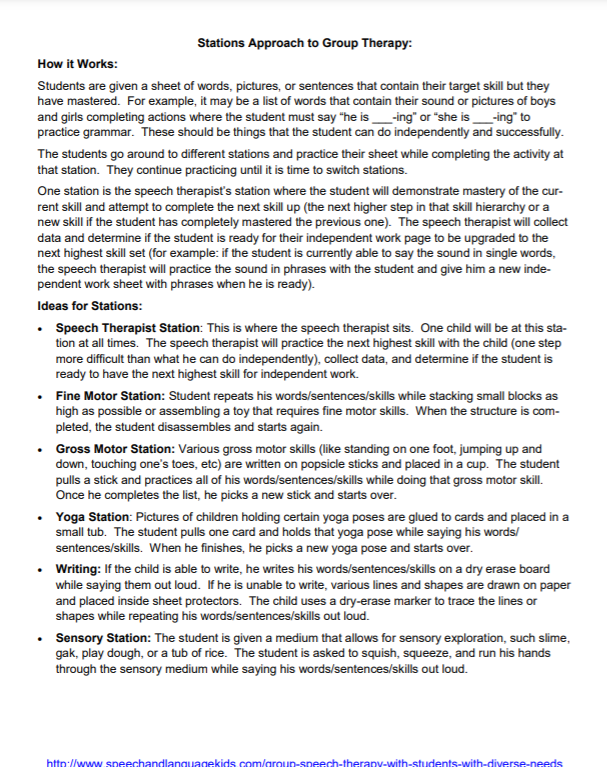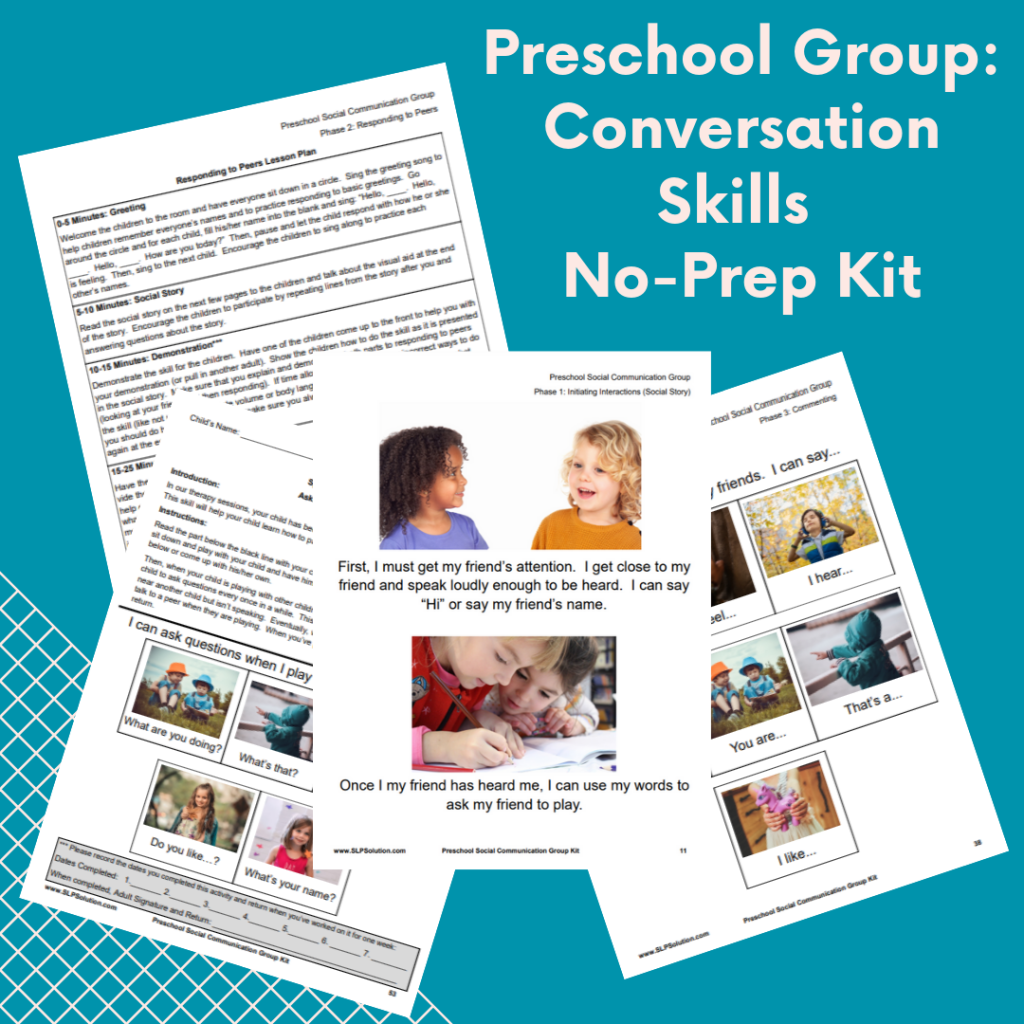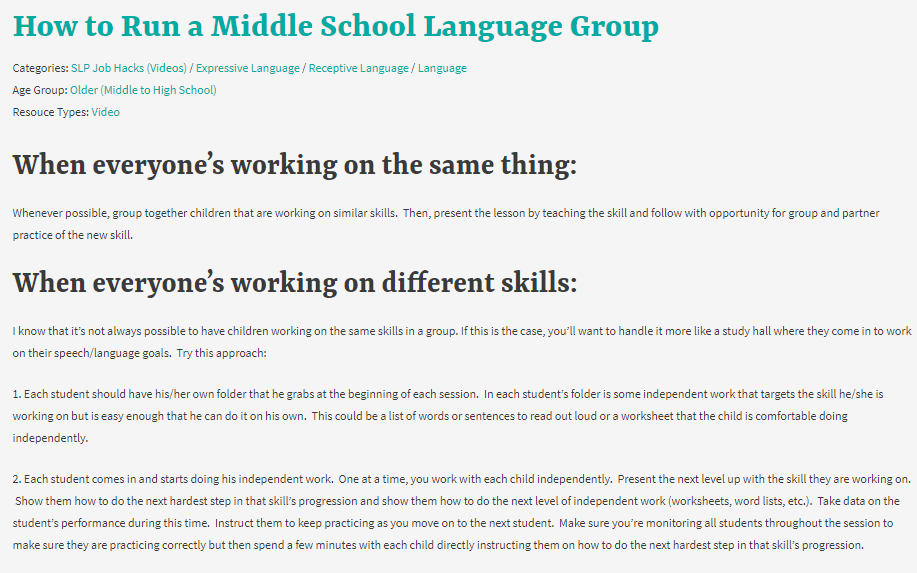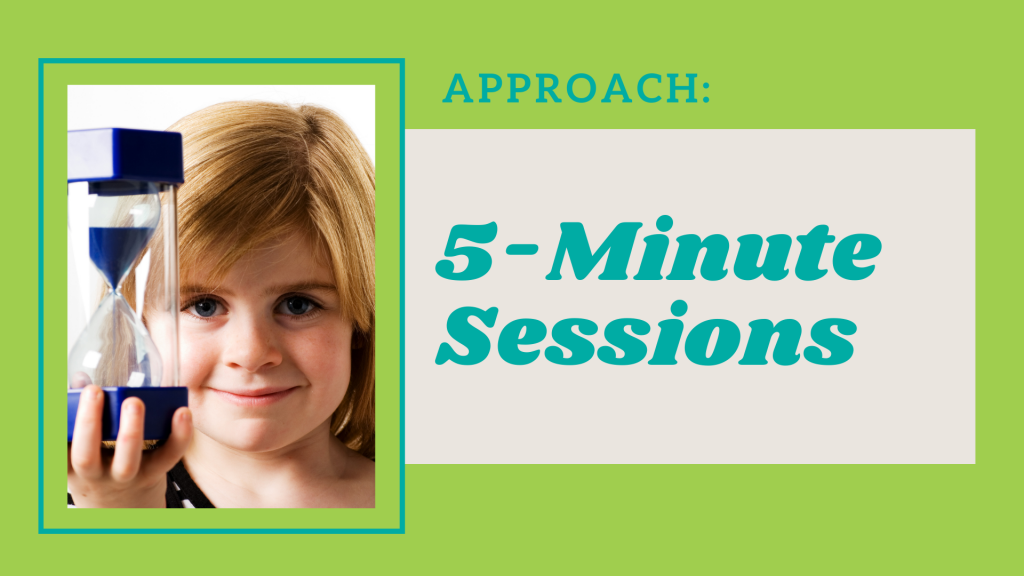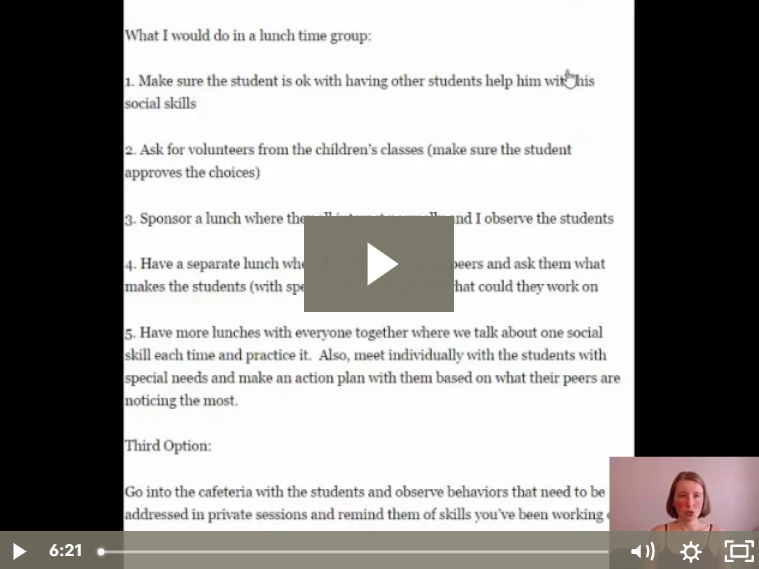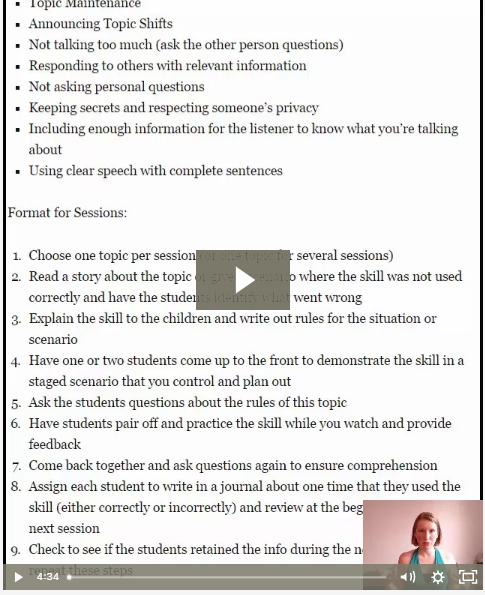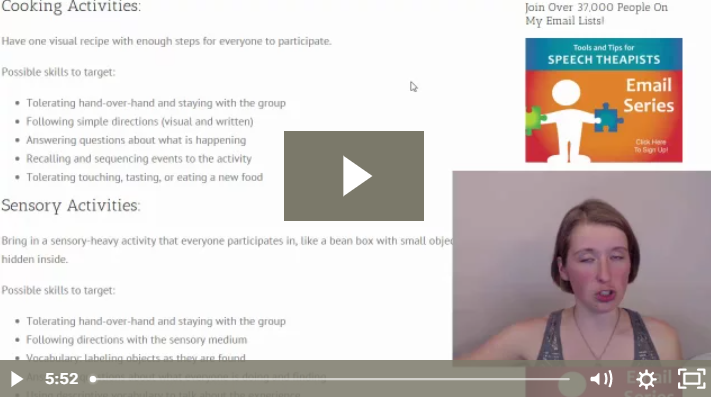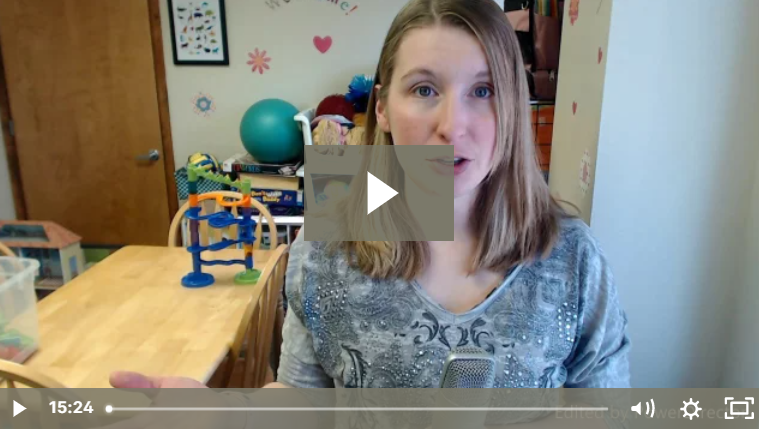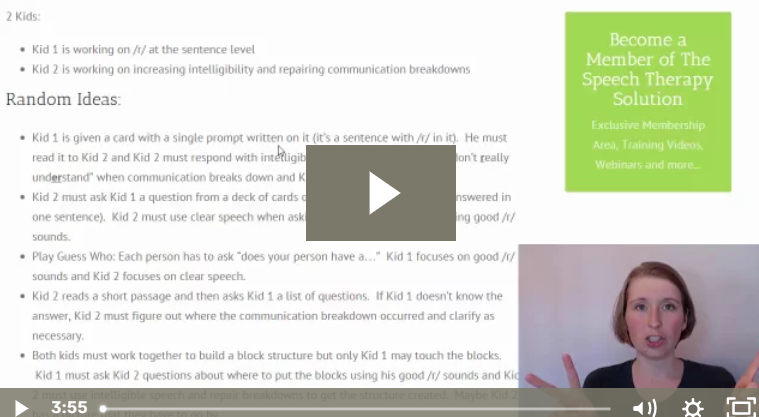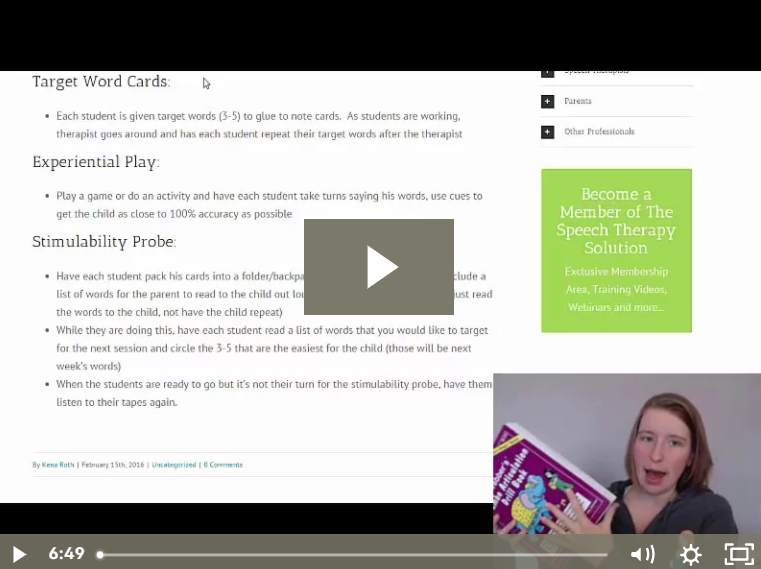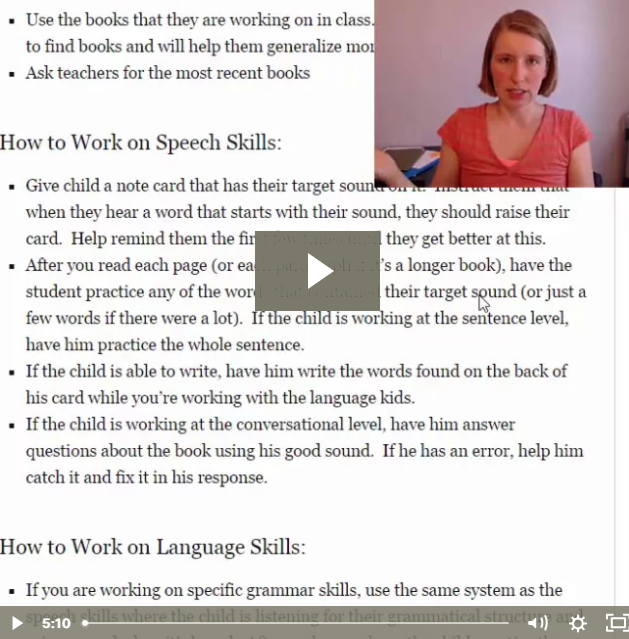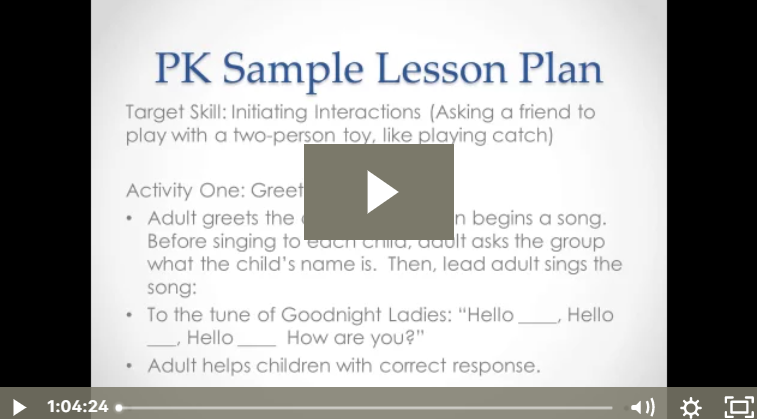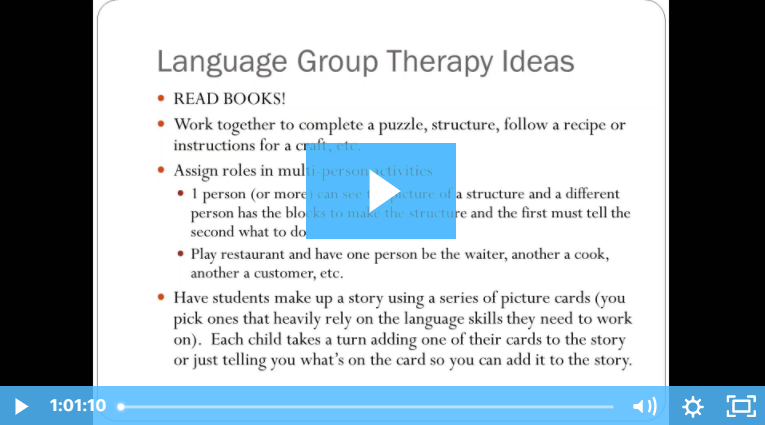Approach: Group Therapy
Description:
The Process:
- Choose a Skill: Decide what skill the child needs to work on
- Choose Individual vs. Group: Decide whether the child needs individual or group therapy for this skill
- Choose a Type of Group Therapy: Choose a type of group therapy activity, if appropriate
- Design the Activity: Now go about planning as usual but keep in mind the group nature of the activity
The Breakdown:
First we begin with the skill. I don’t care if your administrator says, “There are five million kids in this school that need therapy, you’re grouping them all!”. Too bad Mr. Administrator man, that’s not how it works!
First, we figure out what a child needs to work and and THEN we decide if it’s appropriate to work on it in groups. Because sometimes, it just isn’t!
So first things first. Write down the skill you want to work on during a particular session. Then, and only then, may you click on #2 below.
Ok, let’s examine this skill. There are a few things to consider when deciding if this skill should be worked on in a group setting vs. an individual setting. Think about these things:
- Time constraints (though this can’t be the only factor considered!)
- Need for peer support and generalization opportunities
- Need to work on awareness of skill
- Child’s attention skills
- Nature of disability (such as with childhood apraxia of speech)
- Previous success with group therapy
You’ll use all of these factors (and more) to determine whether the skill can be worked on in a group setting.
IF you decide that this skill is appropriate to work on in a group setting, you may move on to step 3 below.
There are a lot of different types of group therapy formats based on what your goals are for that particular group. Is your goal for everyone to get a lot of reps? Or for everyone to work together and support each other? Take a look at some of these common formats for groups:
- Stations Approach
- One Activity, Multiple Skills
- Group Activities for Self-Contained Autism Classrooms
- Social Skills Groups
- Middle School Language Groups
- Lunchtime Groups for Social Language
Or maybe you’re realizing that groups aren’t great for what you need? What about this 5-min alternative to group therapy?
And now, we continue planning as usual! You will still consider the best way to teach this specific skill. You can use the task analysis pages here in this very curriculum! And then you’ll think about how to plan those into the specific group activity that you’ve chosen above.
Supplemental Resources:
Here are some resources included with our membership that are related to using group therapy:
Ideas for various ways to conduct group therapy plus a “Speech Therapy Success Page” for independent practice.
Preschool Social Group No-Prep Kit
(For Purchase)
Our preschool social group kit will include everything you need to smoothly run a preschool social communication group that focuses on initiating and maintaining interactions during play. You bring the children and a few toys and we’ll bring everything else!
(This kit costs $10.50 for paid members. Grab your 30% off discount code here)
How to Run a Middle School Language Group
A few quick ideas for how to run middle school social groups.
5-Minute Sessions
(The “Un-Group” Alternative)
Instead of seeing 5 children in a group for 30 minutes, see each child for 5 minutes individually. You’ll be AMAZED at the progress they make in 5 focused minutes!
Training Videos:
Need some extra help using this approach? Check out these related training videos:
Webinar Recordings:
Ready to dive deep? These hour-long webinar recordings will give you more information about this approach.

